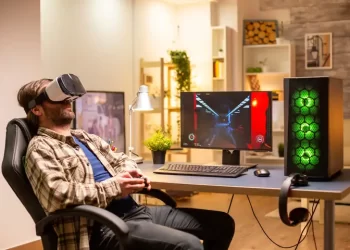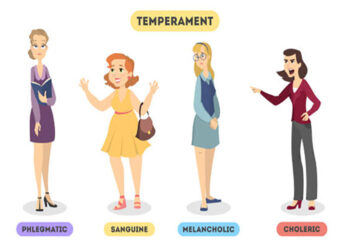
Is there a permanent cure for hemorrhoids? Here, you will find out for yourself. But beyond that, it is good we talk more about hemorrhoids, what exactly they are, how they present clinically, and various treatment interventions currently available.
Surgery (hemorrhoidectomy) offers a permanent cure for hemorrhoids but many people are averse to surgical operations, especially for conditions that are not life-threatening like hemorrhoids.
In this article, we will discuss what hemorrhoids are, the types of hemorrhoids, their symptoms, and the treatment options available, while also peering into the possibility of a permanent non-surgical cure for this condition.
What are hemorrhoids
Hemorrhoids are enlarged, tortuous, dilated anal veins in the lower rectum and/or anus that may lead to bleeding, pain, protrusion, and discomfort especially when passing stool. Millions of people worldwide are affected by hemorrhoids making it quite a prevalent condition.
Hemorrhoids are called by different names in different parts of the world. ‘Pile’ is also used to refer to hemorrhoids. They can be classified into different types depending on their site, cause, position, or extent.
Types of hemorrhoids
Based on site, hemorrhoids can be classified into two; internal and external. Internal hemorrhoids are those located inside the anus and are not directly visible in the early stages. External hemorrhoids, on the other hand, are formed closer to the outside of the anus.
Based on the position, hemorrhoids can be primary position hemorrhoids if they are still confined to the point where they started developing from; or secondary position hemorrhoids if they have grown larger to involve other areas in the anus and anal canal.
Based on the extent, there are four degrees of hemorrhoids: first-degree, second-degree, third-degree, and fourth-degree. These are related to the degree of prolapse of hemorrhoids through the anus. First and second-degree hemorrhoids bulge inside the anal canal and anus. Third-degree hemorrhoids protrude outside the anus but can be returned or reduced by a finger, while fourth-degree hemorrhoids are permanently prolapsed.
Based on the cause of hemorrhoids, there are two types: primary and secondary. Primary hemorrhoids are those without any known cause. They are believed to be due to an idiopathic weakening of the collagen muscle fibers around the anal cushions, beneath which lies the anal veins. This results in laxity of the support and dilatation of the ‘thin-walled’ vessels (the veins).
On the other hand, secondary hemorrhoids are due to a known cause as you will see below.
What causes hemorrhoids?
Secondary hemorrhoids are hemorrhoids with an identified cause or risk factor. Here, you will see several possible causes of hemorrhoids, and if in case you do have hemorrhoids, or you know anyone who does, this will guide you on what the cause might be and how to prevent worsening or a recurrence.
1. Anorectal anomaly
Congenital problems affecting the anus, rectum, and sacrum can affect the position and orientation of the anus. These anorectal anomalies can involve the rectum, anus, anal canal, and sacrum, as well as the integrity of the anal cushion of veins.
2. Strenuous activities that increase intra-abdominal pressure
Intra-abdominal pressure is the pressure within the abdominal cavity. This pressure when exerted outwards is what helps in expelling feces when you go to the toilet. But it can be excessively high in certain situations. These include excessive straining during defecation due to constipation, stony hard stool, and insufficient water intake. These factors can be modified simply by changing the composition of your diet.
3. Intense physical activity
Weight-lifting puts pressure on the abdominal cavity, which is in turn transmitted to the anus intermittently. This increased rectal pressure can result in compression of the veins, and then blockage of blood flow within them, and thereafter hemorrhoids.
4. Chronic constipation
We already say any significant increase in intraabdominal and rectal pressure can affect the anal cushions. Chronic constipation is one condition that makes an individual strain during defecation. And it can potentially result in the development of hemorrhoids.
5. Pregnancy and childbirth
Pregnancy and childbirth significantly affect the strength and laxity of the anal muscles. As the baby passes through the birth canal, the anal vessels and surrounding structures can be compressed by the head of the baby. This causes temporary injuries to the surrounding perineal structures, obstruction of blood flow, swelling and inflammation, and eventual dilatation of the veins.
The strain of childbirth as the mother is asked to bear down can also cause hemorrhoids via the same mechanism described for others that increase intra-abdominal pressure.
Many of these changes are facilitated during pregnancy by pregnancy hormones especially progesterone, which makes the vein relaxed and easily inflamed following the pressure effect. This, together with the others make pregnancy and childbirth one of the commonest causes of hemorrhoids in women.
5. Obesity
Obesity has become a common problem nowadays and it has become one of the leading causes of hemorrhoids. Excess fats put extra pressure on the anal veins. Fat in the abdominal region also increases intra-abdominal pressure resulting in a pressure effect on the anal veins making them swell and dilate.
Thus, maintaining a healthy weight not only affects how your look but also maintains your overall health including preventing certain conditions like hemorrhoids, etc.
What are the symptoms of hemorrhoids?
Common symptoms of hemorrhoids include;
- Bleeding: is often one of the earliest and commonest symptoms of hemorrhoids and this can be alarming for many people. Bleeding hemorrhoids means that the pressure in the dilated veins may have caused a rupture of the vessels. The blood is often bright red, separate from the stool, and occasionally splashes in the toilet bowl, but it is often not significant to cause anemia. Despite this, it is important to seek medical attention for bleeding from the anus.
- Pain: is also a common symptom of hemorrhoids and often results from the strangulation of the veins. It is typically described as a sharp and burning sensation in the anal region, ranging from mild to severe, and is aggravated during defecation, or prolapse of reducible hemorrhoids. Some people may also feel discomfort or pain while sitting or standing for extended periods.
- Swelling and protrusion: is also a common feature of hemorrhoids. The swelling can be confined within the anus and felt only by the patient, or it can begin to protrude outside the anus. This gives rise to the classification based on the extent given above.
- Anal/peri-anal itching: this is another common symptom of hemorrhoids because hemorrhoids predispose to poor peri-anal hygiene. A visible protrusion into the anus can make an affected individual care less for anal hygiene for fear of causing injury to the mass. Also bleeding from the anus can soil the anal region predisposing it to irritation. Scratching the affected area can worsen the symptoms and can lead to further complications including portal pyemia.
What are the treatment options for hemorrhoids?
Back to the talk about a permanent cure for hemorrhoids, there are several treatment options for hemorrhoids, and as mentioned earlier, these can be surgical or non-surgical. Surgical interventions often result in a permanent cure for hemorrhoids, but there is the question of if there are permanent non-surgical cures as well. We will see them shortly.
There are several available treatment options for hemorrhoids, ranging from lifestyle changes to surgical procedures. The choice of treatment depends on the severity of the symptoms and the extent of hemorrhoids.
1. Lifestyle and dietary modifications
Lifestyle and dietary changes are crucial aspects of managing and preventing hemorrhoids. The following conservatory lifestyle measures can prevent or significantly minimize the discomfort and inconvenience associated with hemorrhoids.
- Increasing fiber intake: Consuming high-fiber foods such as whole grains, fruits, and vegetables can add bulk to feces and enhance bowel movement. This means you don’t need to strain too much to void feces in the toilet, thus preventing or minimizing the progression of hemorrhoids. According to the American Society of Colon and Rectal Surgeons, adults should consume about 25 to 30 grams of fiber per day.
- Liberal fluid intake: Adequate fluid intake is essential to maintaining healthy bowel movements. Drinking water and other fluids can help soften stools, prevent constipation, and make bowel movements easier. It is recommended to drink at least 8 cups of water per day.
- Regular exercise: Regular physical activity, such as walking, jogging, or cycling, can improve blood flow and enhance overall body functions including digestion and bowel movements. Exercise can also help reduce pressure buildup in the anal and rectal veins, thus preventing the development or worsening of hemorrhoids.
- Avoiding strenuous activity: If you already developed hemorrhoids at their early stages, avoid any strenuous physical activity that can mount pressure on the anal veins and can help prevent the development of new hemorrhoids or the worsening of existing ones.
- Taking warm baths: Soaking in a warm bath or sitting in a sitz bath (a warm, shallow bath that covers only the hips and buttocks) for 10 to 15 minutes a few times a day can help reduce pain and inflammation associated with hemorrhoids. This can also improve blood flow to the affected area and promote healing.
In most cases, these lifestyle changes are enough to prevent or alleviate hemorrhoids. However, in more severe cases, medical treatment may be necessary.
2. Medical treatment for hemorrhoids
These include the use of medications, and they are as follows:
- Stool softeners: These are orally ingested medications/syrups that help to soften stool. They are medically known as emollient laxatives and are capable of drawing fluid into the feces to make it softer. Epson salt and docusate sodium are examples.
- Pain relievers: Over-the-counter pain relievers such as acetaminophen and ibuprofen can help relieve pain and discomfort.
- Topical suppositories, creams, and ointments: Suppositories are drugs that are inserted into the anus. Phenylephrine is a known suppository for treating hemorrhoids. Creams containing hydrocortisone of witch hazel can help reduce inflammation, and pain around the hemorrhoids. Another example is Procto-Glyvenol.
- Medicated wipes: After having established that hemorrhoids can cause poor perianal hygiene, the use of medicated sanitary wipes can help keep the area clean and free from infection and itching.
Suppository medications like phenylephrine, or hydrocortisone cream can help in shrinking hemorrhoids over time. But these need to be combined with lifestyle modifications earlier discussed.
It is worth of note that there are different brands of these medications if you need to buy them by yourself following a doctor’s prescription or otherwise. You might be confused as to whether to get the branded drug or a generic version and it’s totally understandable.
For a popular drug, Ondansetron used for treating nausea and vomiting, a brand-name version starts at $234.23, while a generic version may be cheaper. But while both might be effective, a brand-name version would have a higher quality assurance as they are tested at different levels, and their price may be totally worth it in the long run.
3. Surgical management of hemorrhoids
In cases where lifestyle modification and medical treatment of hemorrhoids are insufficient, surgical interventions would always be the last resort. As mentioned earlier, surgical treatment of hemorrhoids is the only treatment modality that offers a permanent cure for the condition.
Some surgical treatment options for hemorrhoids include:
- Rubber band ligation: This is a non-surgical procedure that involves placing a rubber band around the base of hemorrhoid to cut off its blood supply. As a result, it will shrink and fall off within a few days. This procedure is effective for treating internal hemorrhoids.
- Injection sclerotherapy: During this procedure, a solution of chemicals is injected into the hemorrhoids, which makes the hemorrhoids shrink and undergo fibrosis. Sclerotherapy is often used to treat smaller internal hemorrhoids, especially first and second-degree hemorrhoids.
- Infrared photocoagulation: This procedure involves using infrared light to coagulate the blood vessels that supply the hemorrhoids, causing them to shrink and slough off. Infrared coagulation is also effective for treating internal hemorrhoids.
- Hemorrhoidectomy: This surgical procedure involves removing the hemorrhoid tissue. It is usually reserved for severe cases of hemorrhoids or when other treatments have not been effective. Hemorrhoidectomy may require general anesthesia and a longer recovery time.
- Others e.g, cryotherapy and electrocoagulation.
In many cases, surgical interventions are not necessary for treating hemorrhoids because they may respond to lifestyle modifications and medications. However, it is always important to see your doctor in any case, no matter how benign you think it may be. This is because other conditions like anal tumors, anal fissures, and anal abscesses may mimic hemorrhoids.
Post-operative care for hemorrhoids
You should have known for sure now that surgical management of hemorrhoids is the only permanent cure for the condition. But after surgery, what happens next? To prevent complications following surgery, and to ensure that hemorrhoids don’t re-occur, certain post-operative care is recommended.
These include the following:
- Analgesics – preferably opioids
- Sitz bath/warm compresses
- Continued dietary modification
- Stool softeners
- Antibiotics especially Metronidazole (may also reduce pain)
- Limit activity, stay at home for up to 4 days.
- Anal dilatation if there is anal stenosis.
Conclusion
Surgical management of hemorrhoids is the only permanent cure for hemorrhoids, but other treatment modalities are available for the treatment of hemorrhoids and to alleviate the symptoms. These include increasing fiber intake, liberal fluid intake, regular exercise, avoiding straining, use of topical creams and ointments, and prescription medications.
You can achieve a permanent cure for hemorrhoids using medications only but it has to be through a resolution of symptoms followed by dietary and lifestyle modifications to prevent a recurrence of the symptoms and anal dilatations.
If you have hemorrhoids, it is always essential to consult a healthcare professional to determine the best course of treatment for the condition. And again, a permanent cure is possible and here, you’ve seen it.









